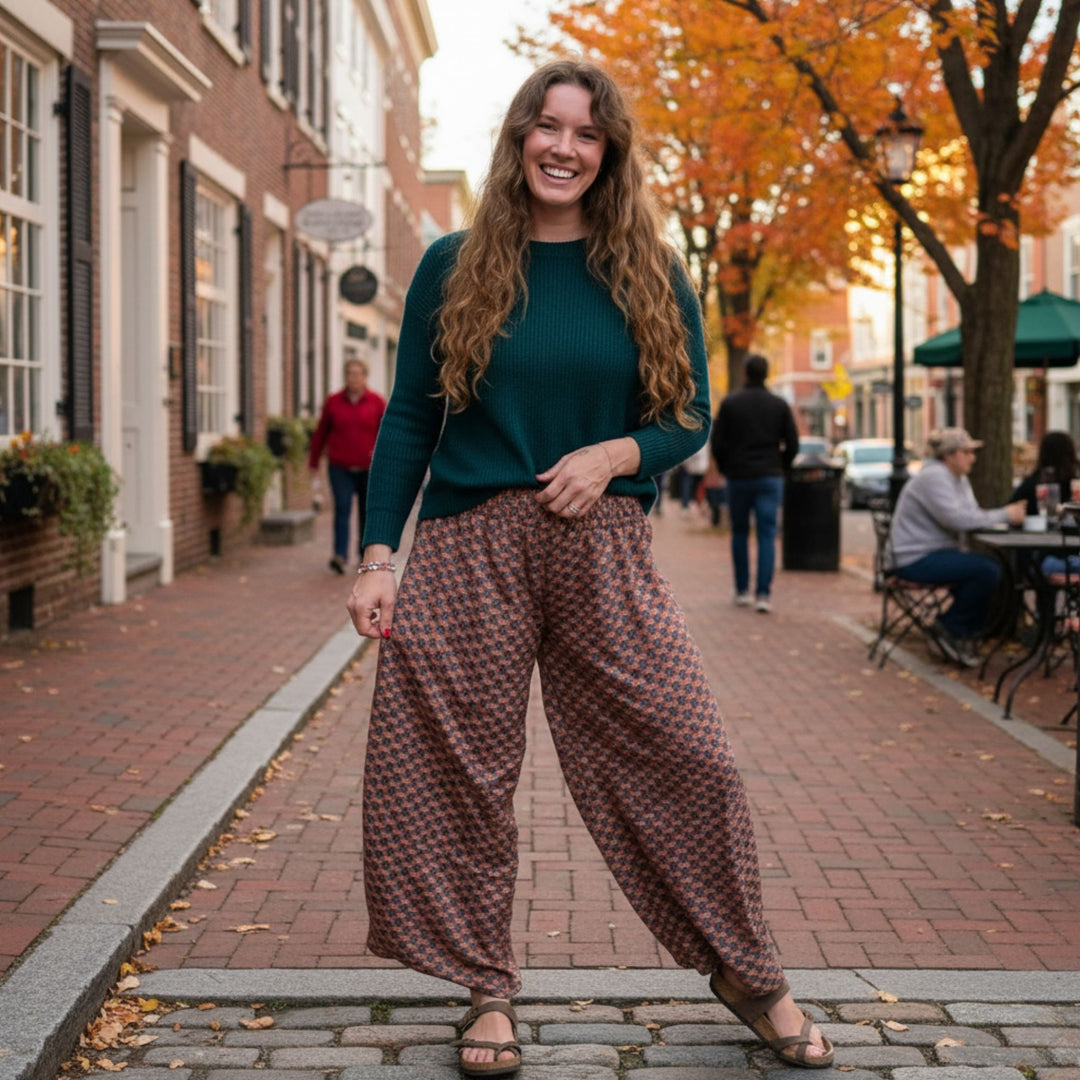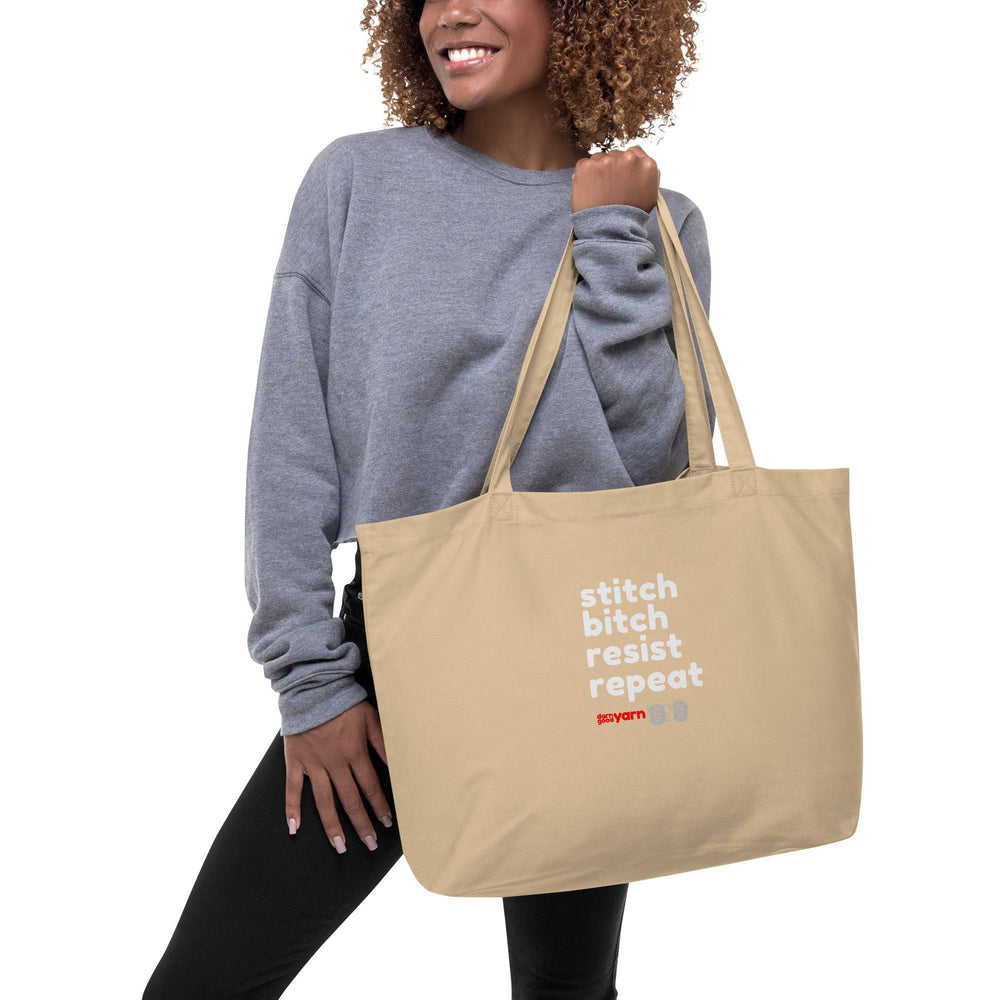Before You Start:
This cute wrap is great for beginners and makes for a perfect one-of-a-kind project because no 2 skeins of chiffon are alike! Check out the complete kit HERE.
Project Details:
Skill Level: Beginner
Craft: Knit
Finished Dimensions:16.5” x 70”
Gauge: ~10 sts per 4”/10 cm in pattern before dropping stitches. Exact gauge is not crucial.
Materials:
Needles: US 17 (12.5mm) straight needles & US 15 Circular Needle
Yarn: 4 skeins of Darn Good Yarn Chiffon Ribbon
Large Darning Needle
Abbreviations:
BO = Bind off
CO = Cast on
P = Purl
K = Knit K1
tbl = twist one stitch on RS by knitting into the back rather than front leg
P1 tbl = twist one stitch on WS by purling into the back rather than front leg
St st = Stockinette Stitch
RS = Right side
WS = Wrong side
SL= slide sts to other end of needle
Notes:
Alternating columns of twisted stitches with regular stitches (including edge stitches) hold the yarns in place after dropping every other stitch to create the open fabric. Knitting in single row stripes helps blend 2 wonderfully different skeins. (To use matchings skeins or create your own stripe pattern, CO as below, then follow chart 2.)
To work with 2 differently colored or patterned hanks (called A & B below), you will blend them by working one row in each color. To do this, work this project on a circular needle. After you finish EACH row, drop the color just worked, THEN: IF the other yarn is waiting patiently for you at the end of the row you just completed, turn the work, pick it up and work back in pattern. IF the OTHER color is attached to the other side of the work from the one you just completed, slide the stitches to the other end of the needle, then pick up and work with the color waiting for you there without turning the work (that strand should be from the row below the one you just completed.) This may sound complicated but will be simple once you have started working. When picking up one yarn under another, twist them one around each other for a neater edge, but don’t pull the working yarn much when you start each row, to avoid gathering the fabric and distorting the last edge st worked in that yarn. NOTE: DO NOT SLIP THE FIRST STITCH OF EACH ROW IF THAT IS YOUR HABIT.
NEWER KNITTERS: The base fabric is Stockinette stitch, which means knitting all stitches on the RS, purling all sts on the wrong side. Normally, you would K one row, P one row, then repeat, BUT when using 2 yarns in Single Row Stripe pattern, this will become: *K 1 row A, slide, K 1 row B, P one row A, slide, P one row B, repeat from *.
STAYING IN PATTERN IS EASY because in St st, you always work what you see when you are holding the yarn and needles in position ready to work the next row (after sliding and/or picking up the other yarn). If you see the Vs of knit stitches, then knit across in pattern. If you see purl bumps, then purl in pattern. You can also see which columns of stitches are twisted with a glance (after the first few rows.)
Instructions:
Using Yarn A, CO 17 sts using a very snug E-loop (or “Backwards loop”) cast-on. Drop A, turn work, slide sts, and pick up B.
Then, blending yarns by working one row in each yarn as below:
*RS row B, slide, RS A, WS row B, slide, WS row A, AT SAME TIME working each row in Alternating Twist stitch pattern as follows:
Alternating Twist Stitch:
All RS rows: *K1 tbl, k1, repeat from * to last st, k1 tbl.
All WS rows: *P1 tbl, p1, repeat from * to last st, p1 tbl.
When you have about 1 yard of (either) yarn left, thread a large darning needle with tail and thread through stitches to hold them while dropping stitches and blocking. Since dropping every other stitch widens the piece considerably, you will bind off after dropping stitches and blocking.
FINISHING: Block by gently stretching to width measurement (~16.5 inches), then place a pin in each column of stitches across the short ends. Spritz with distilled water and let dry. A very gentle steaming will help stitches keep their shape. Another option is to stitch through twisted columns of stitches with a sewing needle and matching thread to help keep the yarn taut and keep the dropped stitch strands between them even.
BO by putting remaining undropped stitches back on a straight needle, pulling out holding yarn, then threading yarn onto a large darning needle and looping it through each stitch twice, while spreading out stitches the same distance apart as the dropped strands with your other hand, to avoid gathering the edge as you bind off. Weave in ends, then pin and spritz or steam bound-off edge if needed.
 Rewards
Rewards





















